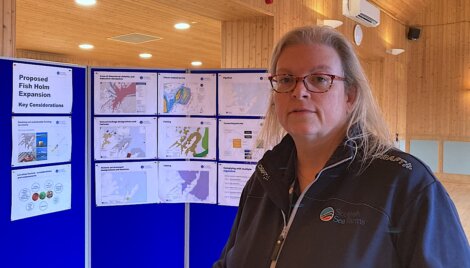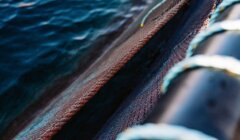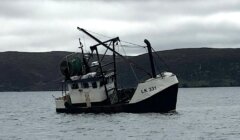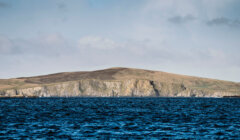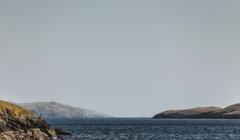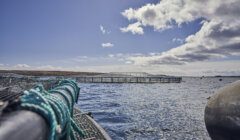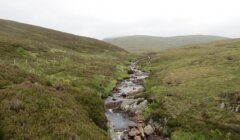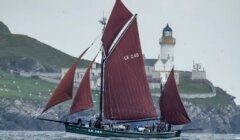Marine / Scottish Sea Farms’ plans for the future: fewer but larger farms located in more exposed waters
SHETLAND is in the middle of a major restructuring and consolidation process that will see the way salmon is produced in the isles change dramatically over coming years with fewer but significantly larger farms in deeper water and at more exposed sites.
Following the acquisition of Grieg Seafood Shetland by main rival Scottish Sea Farms (SSF) last year, the number of salmon farming businesses operating in Shetland has reduced to two.
With Scottish Sea Farms by far the largest of the two, the company is now in the process of reshaping the fish farming landscape in local waters.
This started last year when plans to consolidate a number of farm sites in the waters to the west of Scalloway into one new large site to the east of Whiteness called Billy Baa.
The same process is now underway in the Setterness area between Mossbank and the Lunna peninsula where SSF is in the process of applying to merge four licences into a larger one at the existing Fish Holm.
The company hosted a consultation event in the Vidlin Hall on Thursday afternoon and evening.
SFF’s head of sustainability Anne Anderson said the company is on track to submit applications to the two consenting agencies – the local authority and the Scottish Environment Protection Agency (SEPA) – by the end of June.
The Fish Holm licence application is one of two participating projects that will go through a trial designed to streamline the aquaculture consenting and licensing process.
Scottish Sea Farms hopes to be able to start investing at the Setterness site, worth around £8 million, before the end of the year.
Anderson said the opportunities to move to fewer but larger farms using modern infrastructure and increase environmental knowledge were now available.
“This is part of a bigger picture,” she said. “In all the four areas that we are farming in Shetland we are taking the same approach.
Become a member of Shetland News
“As we have done here at Setter and at Scalloway with Billy Baa, we are reducing the number places that we have, growing the size of the farms, using infrastructure and depths; so overall […] we are expecting to be inhabiting less space, but securing a higher fish survival rate and adding resilience to the business.”
With regards to Setterness that means consolidating farming consent for Hamnavoe (1,910t), Boathouse Voe (216t) and Collafirth (1,200t) into the neighbouring Fish Holm (1,910t) plus adding a further 764 tonnes of biomass.
Two of the other existing five sites in the area – Foraness and South Linga – will become nursery farms for the Fish Holm site, while the other three sites – Swining, Setterness South and Setterness North – will continue to be farmed.
The upgraded Fish Holm site will initially have eight pens with a circumference of 200 metres – the largest cages in Shetland – and will be expanded to host 12 cages over time.
Anderson said: “The key thing is fewer larger farms, fewer larger cages with plenty of water circulation around. And the Fish Holm site has a greater flow.”
Scottish Sea Farms has 25 active salmon farms site around the isles with at least 25 also currently lying fallow.
Become a member of Shetland News
Shetland News is asking its many readers to consider paying for membership to get additional features and services: -
- Remove non-local ads;
- Bookmark posts to read later;
- Exclusive curated weekly newsletter;
- Hide membership messages;
- Comments open for discussion.
If you appreciate what we do and feel strongly about impartial local journalism, then please become a member of Shetland News by either making a single payment, or setting up a monthly, quarterly or yearly subscription.






